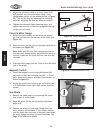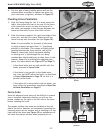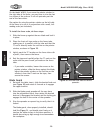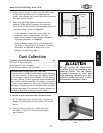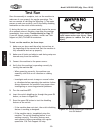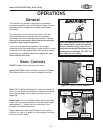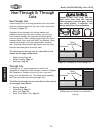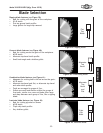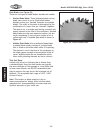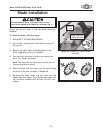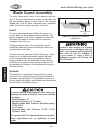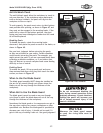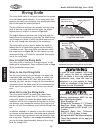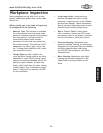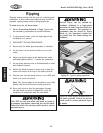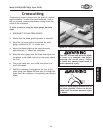
-34-
Df[\cN(/(0&N(/)'D]^%J`eZ\('&('
FG<I8K@FEJ
=`^li\+*%Stacked dado blade.
;X[f9cX[\j(see =`^li\+*)1
There are two types of dado blades: stacked and wobble.
• JkXZb\[;X[f9cX[\: These dedicated dado cutting
blade sets consist of up to 8 individual blades.
Multiple cutters are "stacked" between two outside
blades. The width of the dado is determined by the
combination of cutters that are “stacked” together.
The dado is cut in a single pass leaving a smooth and
square channel in the face of the workpiece. Stacked
dado blades are the most expensive option, but are
worth considering if your projects require a lot of
visible dado cuts. A stacked dado blade is shown in
=`^li\+*.
• NfYYc\;X[f9cX[\: Also a dedicated dado blade,
a wobble blade usually consists of a single blade
that is tilted on the arbor shaft while it is spinning.
The channel is cut in the face of the workpiece as
the blade passes through its pre-adjusted width of
travel. Wobble blades are an inexpensive option
when visibly pleasing channels are not a concern.
K_`eB\i]9cX[\
A blade with a kerf or thickness that is thinner than
a standard blade. Since thin kerf blades are typically
the same thickness of the spreader or riving knife—and
in some cases thinner—we DO NOT recommend that
they be used on this saw due to the increased risk of
kickback. The acceptable kerf range is 0.102"– 0.126"
(2.6mm–3.2mm).
Efk\1K_`jj\Zk`fefeYcX[\j\c\Zk`fe`jYpef
d\XejZfdgi\_\ej`m\%8cnXpj]fccfnk_\jXnYcX[\
dXel]XZkli\iji\Zfdd\e[Xk`fejkf\ejli\jX]\Xe[
\]]`Z`\ekfg\iXk`fef]pflikXYc\jXn%



